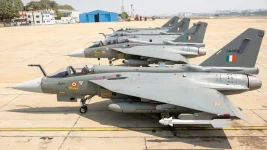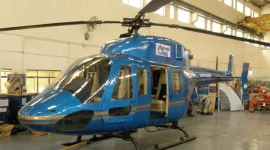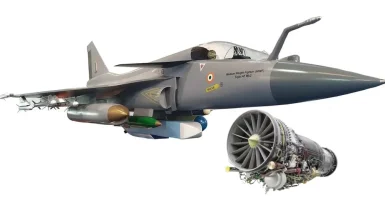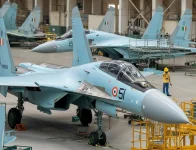- Views: 3K
- Replies: 27
In a major development for India's indigenous defence capabilities, state-owned Hindustan Aeronautics Limited (HAL) has invited private Indian companies to participate in manufacturing the country's futuristic fifth-generation fighter jet, the Advanced Medium Combat Aircraft (AMCA).
Through an Expression of Interest (EOI) issued earlier this year, HAL is seeking four partners to form a Joint Venture (JV) dedicated to producing major assemblies of the aircraft.
This strategic move aims to leverage the expertise and capacity of the private sector to accelerate the AMCA program, a cornerstone of India's push for self-reliance ('Atmanirbhar Bharat') in advanced aerospace technology.
Under the proposed JV structure, HAL will hold a majority 50% stake, ensuring its leadership role, while each of the four selected private firms will hold a 12.5% share.
Collaborative Manufacturing Model
The AMCA, currently being developed by the Aeronautical Development Agency (ADA) alongside the Defence Research and Development Organisation (DRDO), is designed as a state-of-the-art stealth multirole fighter.Its complex design, incorporating advanced materials and systems, necessitates a sophisticated manufacturing approach. The JV aims to address this by dividing the aircraft's structure into specific "work packages."
Each of the four private partners will be responsible for one major section of the aircraft, delivering it as a complete unit:
- Front Fuselage: Including the fully equipped structure and landing gear assembly.
- Center Fuselage: Encompassing the central airframe section, air intakes, and aileron assembly.
- Rear Fuselage: Comprising the rear structure, horizontal tail, flaperon, and flap assembly.
- Wings & Tail: Covering the fully equipped wing and vertical tail assembly.
HAL will oversee the integration of these major assemblies and maintain quality control across the production line. This modular approach is expected to streamline manufacturing, foster innovation, and enhance overall efficiency by utilising the specialised skills of different companies.
Production Roadmap and Air Force Needs
The EOI outlines a preliminary production timeline aiming for the delivery of 126 AMCA units. Starting in the financial year 2035-36, the JV is projected to produce nine aircraft assemblies per year initially, increasing to ten units annually from 2039-40 through 2046-47. These figures are tentative and subject to change based on finalized Indian Air Force (IAF) orders, consistent funding, and the achievement of technological milestones.The IAF anticipates needing approximately five to seven squadrons of the AMCA, translating to roughly 90-126 aircraft. These advanced fighters are crucial for modernising the IAF's fleet and addressing its current operational strength, which stands below the officially sanctioned number of squadrons.
The AMCA program itself is advancing, with the first flight of a prototype aimed for the 2028-2029 timeframe, leading towards potential induction into the IAF around 2035. The successful establishment and functioning of this manufacturing JV are seen as critical steps to ensure the aircraft transitions smoothly from development to large-scale production.
Selection Process Underway
Private Indian companies with demonstrated capabilities in aerospace manufacturing, tooling, and assembly integration are invited to submit their interest by the deadline of May 7, 2025.The selection process is expected to favour firms with a strong track record in defence manufacturing, financial stability, technical expertise, and the capacity to meet the demanding production requirements for a fifth-generation aircraft.
Potential contenders could include companies like Tata Advanced Systems, Larsen & Toubro, Bharat Forge, and VEM Technologies, which have prior experience collaborating with HAL and DRDO on various defence projects, including the Tejas Light Combat Aircraft.
The chosen partners will need to prove their ability to handle the sophisticated aspects of the AMCA, such as its stealth features, potential for supercruise (supersonic flight without afterburners), and integration of cutting-edge avionics.
This partnership model represents a significant delegation of manufacturing responsibility by HAL, while it retains overall control and system integration leadership for this vital national project.




